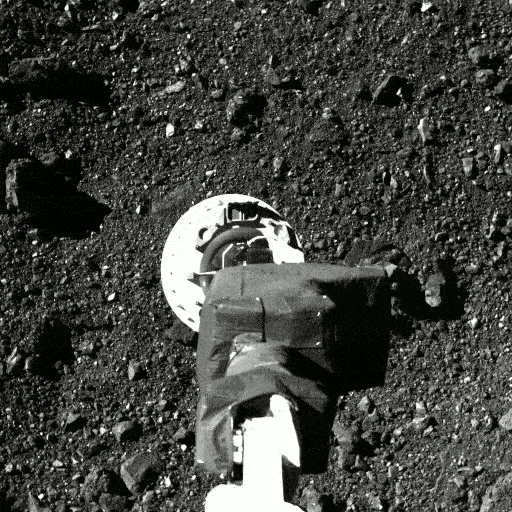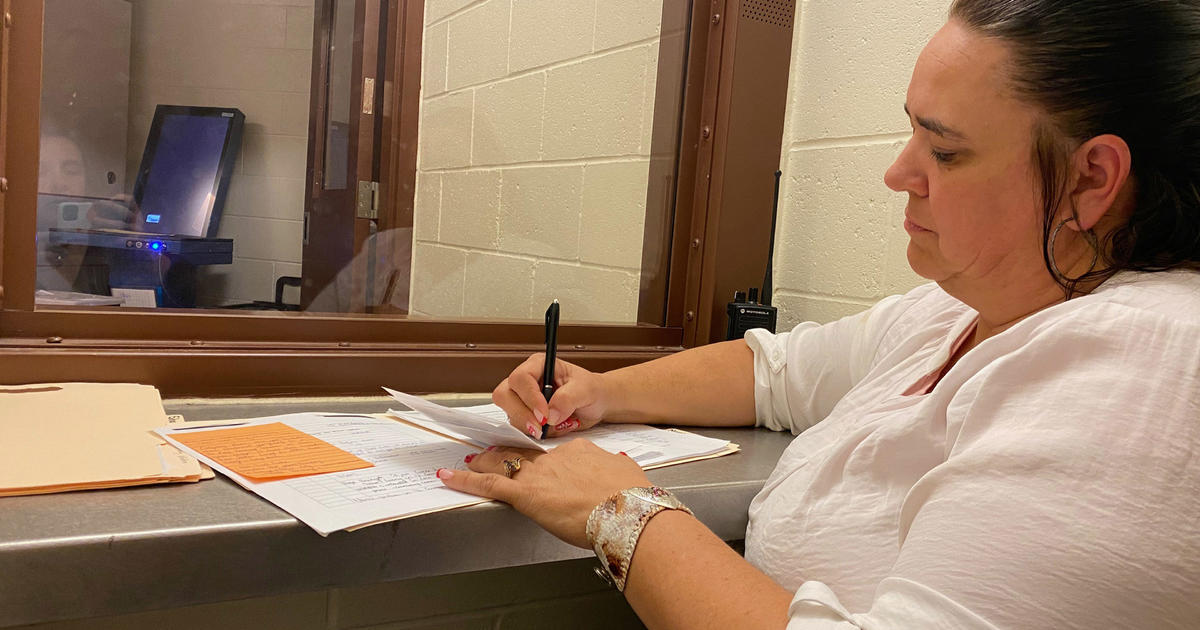NASA spacecraft stirs up a rocky blizzard on asteroid Bennu as it attempt to collect samples
Pictures from NASA's OSIRIS-REx spacecraft show a sample collector pressed into the surface of the asteroid Bennu Tuesday stirred up a rocky blizzard of small fragments and soil, providing a rich source of primordial material for capture and return to Earth, elated mission managers said Wednesday.
While researchers do not yet know how much material may have been captured inside the collector, known as TAGSAM, the cloud of debris stirred up in the brief six-second touch-and-go encounter indicates the system worked exactly as designed.
"Bottom line, from analysis of the images that we've gotten down so far, is that the sampling event went really well, as good as we could have imagined it would," principal investigator Dante Lauretta said during a teleconference Wednesday.
"And I think the chances that there's material inside the TAGSAM head have gone way up based on the analysis of these images."
Operating on its own some 200 million miles from Earth, the SUV-size OSIRIS-REx dropped out of a low-orbit around Bennu Tuesday, extended an 11-foot-robot arm carrying the probe's TAGSAM sample collector and slowly flew itself down to a shallow crater known as Nightingale.
Mounted on the end of the robot arm like an inverted cake pan, the TAGSAM was pressed down onto the rocky soil within about one yard of its target. One second later, pressurized nitrogen gas shot into the collector, violently stirring up underlying soil and small rocks for capture. Five seconds after that, the spacecraft climbed away.
A sequence of photos put together like a stop-action movie shows the TAGSAM descending, hitting and crushing a relatively large rock and then sinking an inch or so into the surface. When the nitrogen gas was released, a cloud of rocky fragments and soil was blasted up and outward around the spacecraft.
"When the TAGSAM head is making contact with the asteroid's surface, and it's crushing what appears to be a very soft, friable material, (that) is good news," Lauretta said.
"In our laboratory tests, when the TAGSAM head penetrates, and we're estimating about two centimeters of penetration during this event, a lot of material gets forced up into the sample collector. And of course, by crushing, you're going to drive a lot of material onto these contact pads."
The contact pads are steel velcro-like collectors positioned around the TAGSAM's lower edge that were intended to snare small, millimeter-size particles as the probe touched the surface.
"You can see that particles are flying all over the place, we really did kind of make a mess on the surface of this asteroid," Lauretta said. "But it's a good mass, it's the kind of mess we were hoping for, lots of material has been mobilized, giving us additional confidence that we actually pushed material up into the sampler head."
On Thursday, flight controllers plan to re-orient the TAGSAM so one of OSIRIS-REx's cameras can photograph its interior. Any material stuck to the contact pads likely will be visible and, depending on the lighting, researchers may get a glimpse of larger fragments that were blown into the collector's chambers.
The true test will come over the weekend when flight controllers extend the robot arm and put OSIRIS-REx into a slow spin, allowing them to compare measurements made before and after the sampling attempt to determine the mass of any material captured Tuesday.
The minimum required for mission success was 60 grams, or 2.12 ounces. If the amount actually collected is much less than that, OSIRIS-REx has enough nitrogen gas to make two more attempts. But based on the flurry of debris kicked up Tuesday, engineers appeared confident the spacecraft likely met, if not exceeded, the mission requirement.
"The gas was blown down for about five seconds, which is as much time as we were hoping to get to collect that material," Lauretta said. "So the system seems to have performed nominally, the surface of Bennu behaved very well. And so everything that we can see from these initial images indicates sampling success."
Assuming detailed analysis bears that out, OSIRIS-REx will leave Bennu early next year to bring the precious samples back to Earth.






